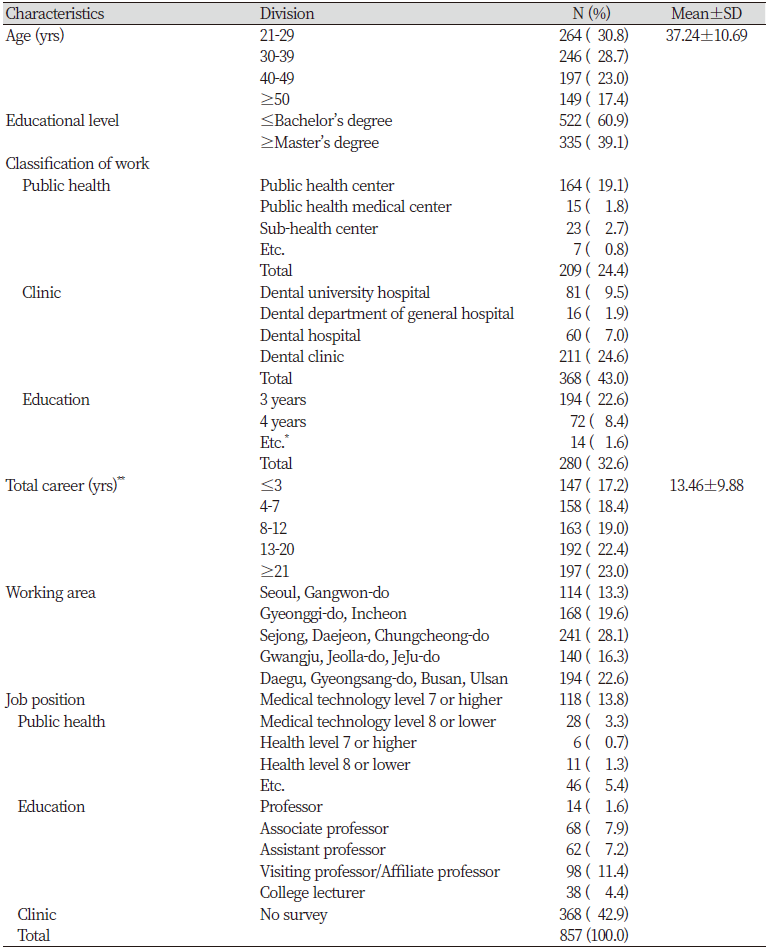Abstract
Objectives: This study aimed to provide basic data to lay the groundwork for the introduction of an advanced dental hygienist system by sampling dental hygienists’ views about the system. Methods: A nationwide questionnaire survey was conducted targeting 857 dental hygienists working at dental hospitals and clinics, local health institutions, and educational institutions. The collected data were analyzed using frequency analysis, t-test, one-way analysis of variance (ANOVA) (Duncan as post-analysis), and crossover analysis. Results: The average interest level in the advanced dental hygienist system was 3.83±0.95 points. The necessity by field was confirmed to be the highest during dental hygiene for the elderly and persons with disabilities. The working experience necessary for becoming a specialized dental hygienist is 5.56±2.99 (years). The education period necessary for becoming a specialized dental hygienist is 77.30±77.61 (hours). The work authority level for an advanced dental hygienist was indicated to be 50 respondents (5.8%), who said they required direct guidance from a dentist, 313 respondents (48.2%) who said they needed indirect guidance from a dentist, 200 respondents (23.3%) who said OK when given an advanced dental hygienist’s separate judgment, 194 respondents (22.6%), who said that the authority must be varied depending on the work. Conclusions: The interest and need of the advanced dental hygienist system were proven to be high and are expected to be applied to basic data for the introduction and settlement of the system.
Figures & Tables



